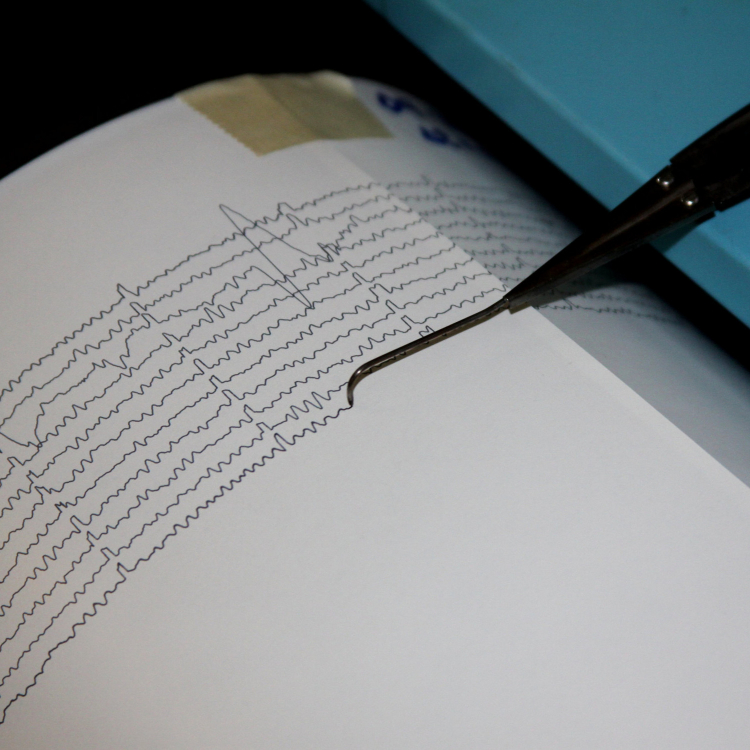
Focus on change
In this meditation path, we are interested in what is changing in our experience at the moment. In Unified Mindfulness we call this flow, in East Asian medicine and martial arts it is called qi / chi / ki, and in Buddhism it is called impermanence (pali: anicca). And in Taoism we see this idea in the relationship between yin and yang.
We can learn to find flow in all active outer and inner senses, and in all their rest states.
NB: Flow in this context is not synonymous with the flow state. In psychology, flow theory is based on observations of very rewarding conditions where we are completely engrossed in an activity and forget time, place and ourselves. All meditations with a focus on concentration often lead into flow states, such as mindfulness meditation.
Why focus on change?
The deep relief from change

When we focus on flow, we experience on a deep level that everything is not only “going to change”, but in fact is about to change already second by second.
If you have physical discomfort, emotional discomfort, mental confusion or urges that can lead to unproductive actions, focusing on how the experience changes can provide relief there and then.
A good example of such meditation is to notice vanishings.
An important milestone in your meditation practice
Being able to easily perceive flow signifies a milestone in one’s meditation experience.
When we start meditating, we perceive sensory experiences mostly as concepts, and after some experience we experience them as pure sensory experiences. When we then examine the pure sensory experiences, we discover that they are in constant change. Not only do they alternate among themselves, but each one is also fundamentally in and created of movement.
Let us take meditation on the thoughts as an example.
When we first try to meditate on the thoughts, we are often interested in what the thoughts say. We may think “Now I am meditating well”, and then one thought leads to the other. This often causes us to forget to focus on the meditation technique.
Eventually we learn not to be interested in the content of the thoughts. We perceive the mind more as pure inner sound. Not content, but contour.

And with even greater sensory clarity, we discover that pure sound is fundamentally perceived by the nervous system as impulses that expand and contract. Almost like the waveforms of a seismograph.
With each step, we become less identified with subconscious processes, leading to less discomfort, more self-awareness, more clarity, and more agency.
This is a development we see in all mindfulness meditation, and which is discussed, among other things. as the progress of insight in Theravada Buddhism. A more everyday example is mindfulness-based pain management.
The experience of fundamental unity
When we experience flow in the depths of consciousness, the difference between ourselves and the world dissolves. This is also called a non-dualistic experience.
In such an experience, a unity of the senses is created because the whole of consciousness basically rests in a singular space pervaded by flow. Paradoxically, this blurring of boundaries between the senses leads to the whole being functioning better, It creates an integration into a pure and simple action or being. This becomes an inexhaustible source of deep inspiration, wisdom and flow zone states (like samadhi and jhanas).
It is also possible to go directly to a non-dualistic experience. This is the preferred method in zen Buddhism and advaita vedanta. A common non-dualistic exercise in these traditions is to do nothing.
Classic awakening
If we go even deeper into the experience of flow, we come to a fundamental milestone.
If you have good enough attentional skills and stay long enough in a field of consciousness that is dominated by flow, you realize on a basic and unavoidable level that flow is more fundamental than the Self itself. The self is something that is created and disappears again and again, moment by moment – it is not a stable object. It is a verb and not a noun.
To realize this on a deep level through experiencing it, and to have equanimity with this insight, means classical enlightenment or awakening. But it can take time both to realize it deeply enough and to have enough equanimity with this new perspective.
Unfortunately, this process can trigger a lot of intense fear for some because you find yourself in a situation where there are no fixed points or solidity to seek refuge in. If you experience this and you do not get through, it is important that you seek help. with someone who has experience in guiding people through it.
How can we experience flow?
There is always flow around us, and our ability to perceive it is also changing. As we develop more concentration, sensory clarity and equanimity, flow often becomes more accessible and clear. We can also increase the likelihood of that by using powerful awareness tools such as tagging.
Yet it happens that even experienced meditators cannot perceive flow in a sense. An important learning is to have as much equilibrium with the fact that there is flow available as when it is unavailable. If you do not find flow, it is also a lot of good to find in an experience that is immutable, such as stability and rest.
Flow can be both unpleasant and pleasant, surprising or relaxing, in the surface of everyday attention or deep in the consciousness. Some of the most obvious ways in which flow occurs are often:
- Wavy: Continuous waves, as in glass jellyfish, or amoebae, or lava lamps. In the beginning, many people experience this all over their bodies.
- Vibrating: Sparkling, like champagne bubbles, or electric sparks. When it buzzes in the body after exercise, or after a cold shower, or after lovemaking, this form of flow is often evident.
- Expanding and contracting: Moving outwards or inwards, opening or closing. This form of flow is so fundamental that it includes the other forms.
- A combination of two or more of these.
Flow can also be uncomfortable, especially initially. For example, expansion and contraction can be experienced as oppressive or as an unpleasant pressure outwards or inwards. Nevertheless, a focus on this flow will often lead to the discomfort also being broken up into its constituents of pure sensory experience, and then into pure movement.
For a thorough review of the various aspects of flow, I can highly recommend the book The Science of Enlightenment.
Focus on change in practice
When meditating on change, you can use the same basic routine as in other mindfulness meditation:
- You notice something in the sensory experience that changes
- Use the label SEE / HEAR / FEEL FLOW (possibly EXPANSION or CONTRACTION if you meditate on this aspect of flow)
- Keep your attention on the sensory experience with as much concentration, equanimity and sensory clarity as you can for 3-6 seconds
- If the sensory event vanishes or suddenly loses intensity, note it as GONE
- Return to point 1
You can vary this meditation routine in many ways.